White Paper: Understanding The Economic Blueprint of The Honorable Elijah Muhammad
By Dr. Ridgely A. Mu’min Muhammad January 2, 2013
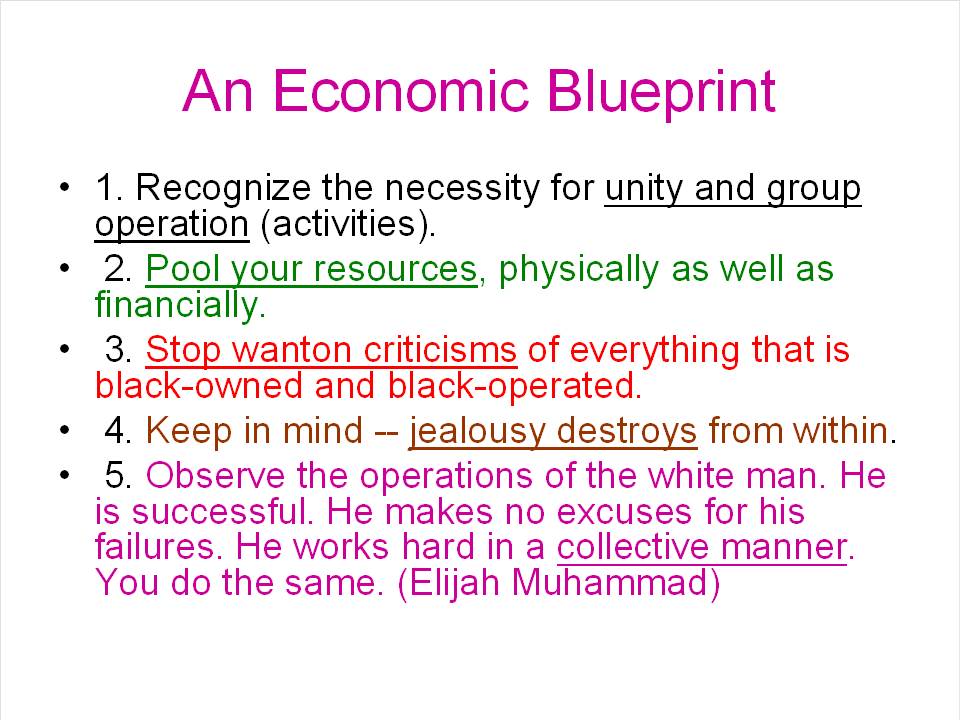
First of all, in my opinion, no one except an enemy of our rise would argue against any of these five points. Underneath each of these headings one can add some corollaries or refining points to operationalize the principles inherent in each point. Then we can use these five points to analyze where we are and how we must change to get to where we want to go.
- Recognize the necessity for unity and group operation (activities).
Unity and group operations will not work in an environment of favoritism and nepotism. “What is good for the goose in good for the gander.” Is “group operation” group ownership? The Jews are a most exclusive group when dealing with non-Jews but within Israel they set up cooperatives called kibutz to develop the land. When it comes to smaller endeavors like barbering, dentistry, small shop keepers, etc., they have sole proprietorships or partnerships. We should explore the Mondragon cooperative model in Spain and others, so we can learn more as how to determine which sectors and sizes of operations that may work better under individual verses collective ownership and management.
The ownership question is most important for decision making, responsibility bearing and the intergenerational transference of wealth. What happened to the Nations properties at the departure of The Messenger is still current in the people’s minds including those experts that we might engage in our new economic development initiatives.
- Pool our resources physically as well as financially.
We in the Nation of Islam are scattered across a country that is 2,000 by 3,000 miles. Our Mosque and study groups are too small to even receive a tractor trailer load of anything. Even within each Mosque or study group the members are scattered across the landscape. I have done the analysis and for most cases only one half of the members of any Mosque live in the same city or town. Many believers at Mosque Maryam live in adjoining suburbs. Very few live within a five minute drive of the Mosque or Salaam Restaurant. If all of the members of our Mosque and study groups lived close to one another, we could have “Saviours’ Day” vending many times per week instead of once per year.
We have a farm in Georgia that is 783 miles from Chicago, yet the bakery demands that the farm in Georgia gets them the whole wheat flour for $0.40 per lb because they can get it for that price from the white man in Chicago. It will cost the farm at least $900 round trip to Chicago whether we ship 1 box or 400 boxes (40 lbs each) to Chicago.
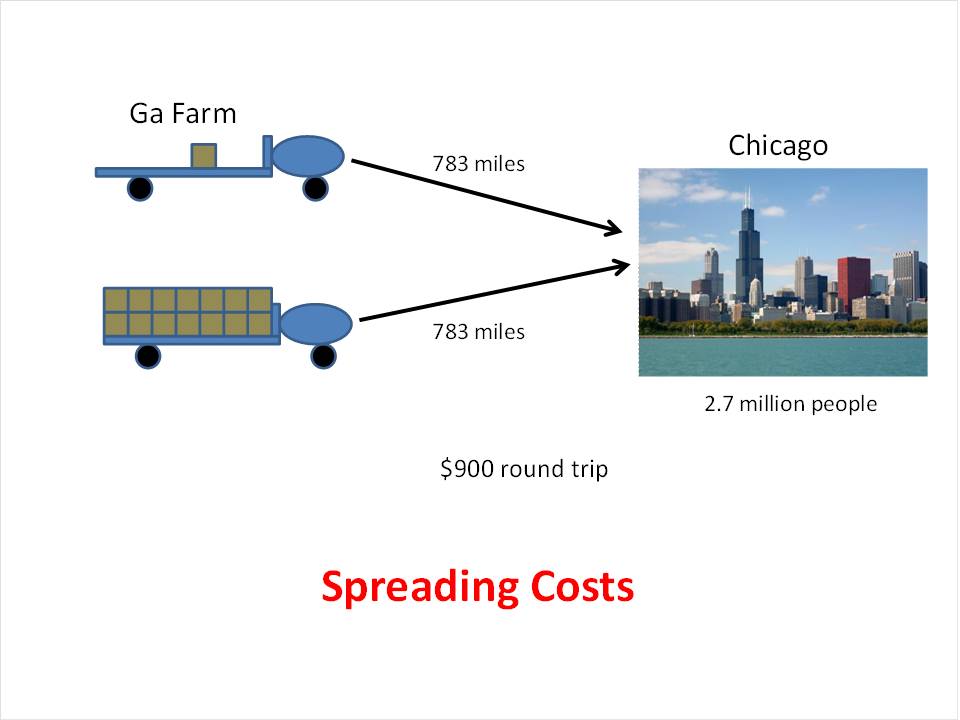
The following data shows that we can get it to Chicago for $.40 per lb, if Chicago orders 17,600 lbs at a time. However, the bakery is no where near being able to sell 17,600 loaves of bread and it cannot store 17,600 lbs of flour. So what am I supposed to do?
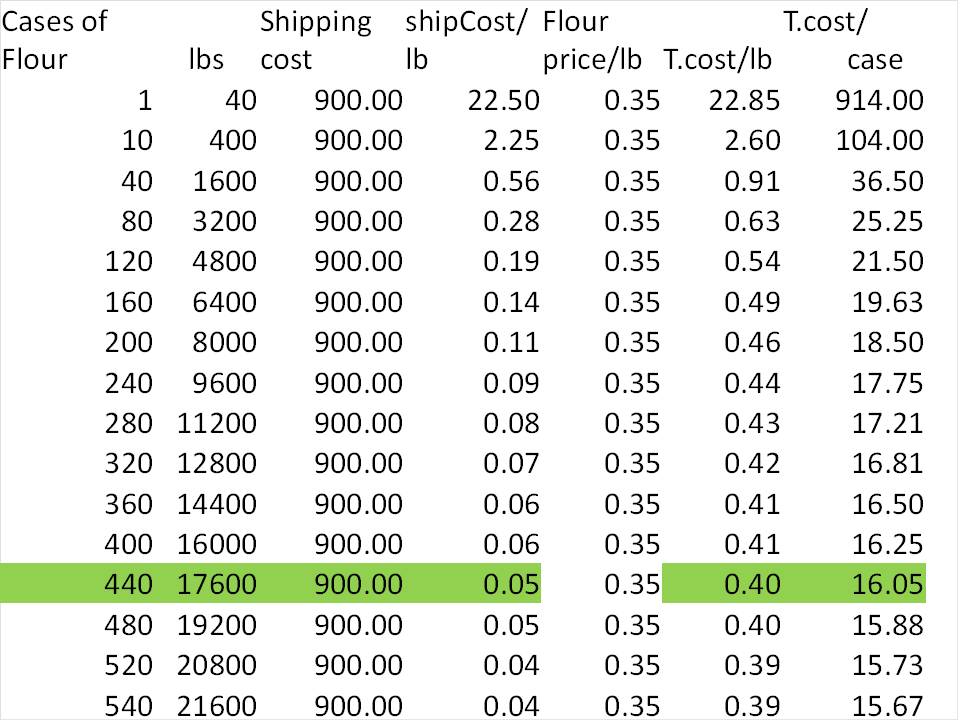
On the financial end, if we get people to give or loan the new economic program billions of dollars, how are we to store such monies since the FDIC only guarantees $250,000 per account per bank? If the bank fails, all we can get out would be $250,000.
Using the figures in the revised Torchlight for the $.05 per day savings, it will take us 176.67 years to acquire enough capital to buy 100 million acres of land based on an average land price of $2,650 per acre. What will happen to gold and land prices over this period? Below is a table and graph of gold and land prices (Iowa farmland prices) from 1960 to 2012. Inflation will take its toll, so would a better strategy be using the money as it comes in to purchase large tracts of land, needed equipment and supporting infrastructure for processing, distribution and sales of the raw products produced on that land like the Jews did.
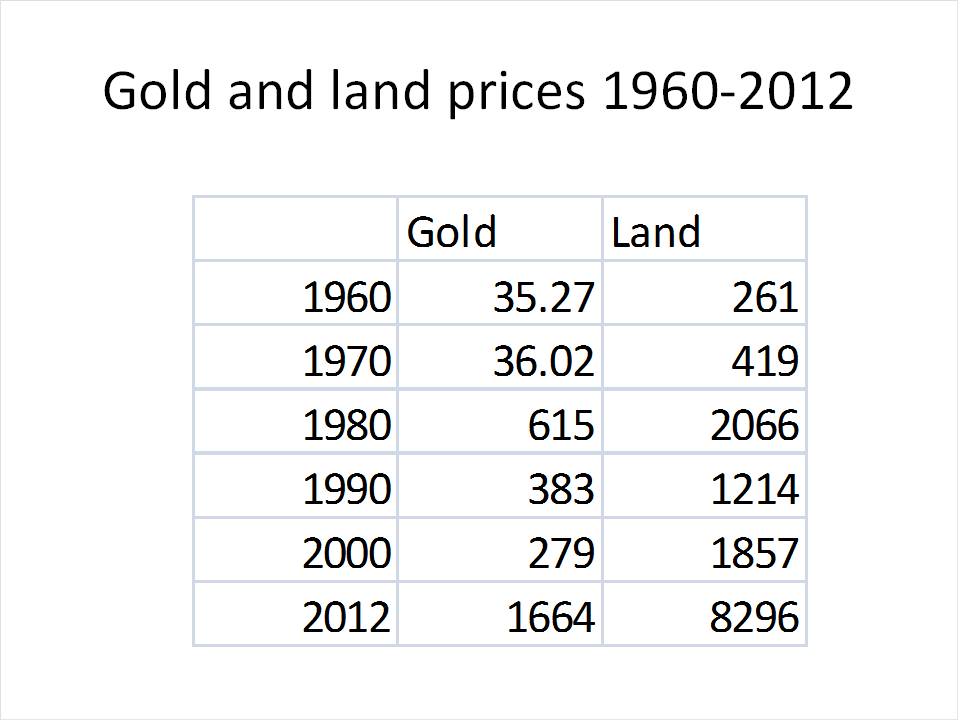
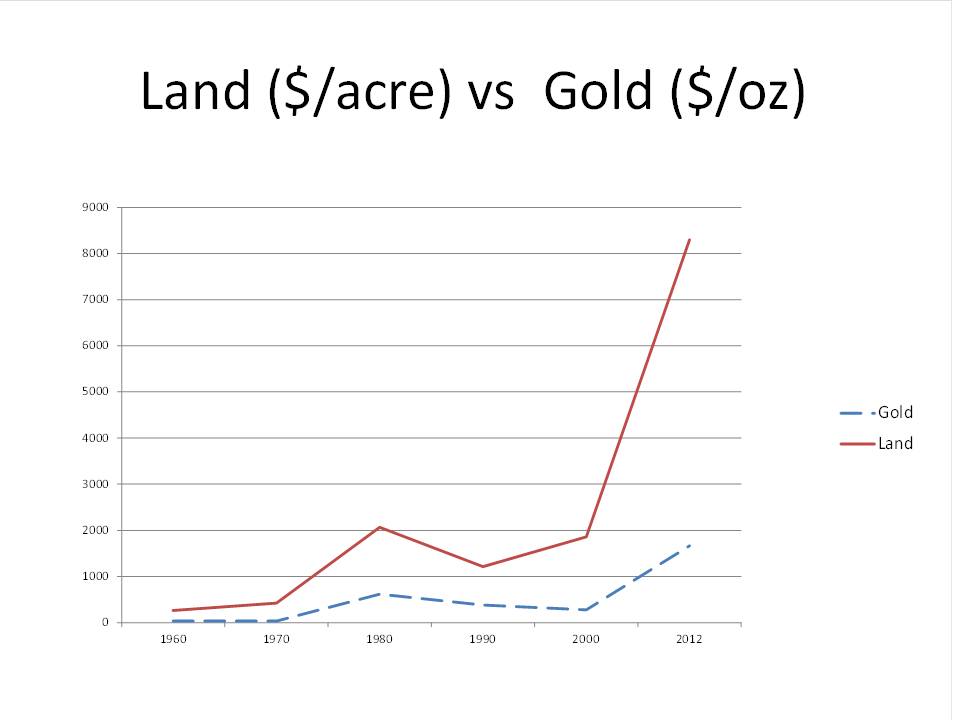
Above I mentioned the Jews. According to TSRBJv2, the Jews had complete control on the clothing industry that used cotton, before they started growing cotton in America. They already had a market developed for the cotton. As a matter of fact the South thought that cotton was “King” until they tried to use cotton to blackmail England and France into supporting them against the North in the Civil War. The South stopped the exports to Europe in the first year of the Civil War, but England and France had anticipated that maneuver and had cotton stored in Europe and had began more purchasing from Egypt. England and France did not come to the South’s aid. So cotton was not “King” after all, because markets and finance will always trump production.
However, by the 1890s farmers had gotten a lot more sophisticated about money and banking. They even almost won the presidency in 1896 based on new money being issued based on grain reserves instead of the gold that was controlled by European families. The farmers understood the power of markets and finance, but did not and do not have the power to force their will over the international bankers who control the minds of the city people.(more on this below) So the international bankers sealed the fate of the farmers by setting up the Federal Reserve System in 1913. Since that time the farmer has been made a slave to the processors and money lenders. Below is a chart of what is called the “Parity Ratio” which compares what a farmer receives as prices for his commodities (price) divided by what he has to pay to produce that commodity. The graph interestingly starts off in 1910 with the ratio between price over cost being “1”. Now the ratio is .40 which means that the farmer has to work 2.5 times harder today than in 1910.
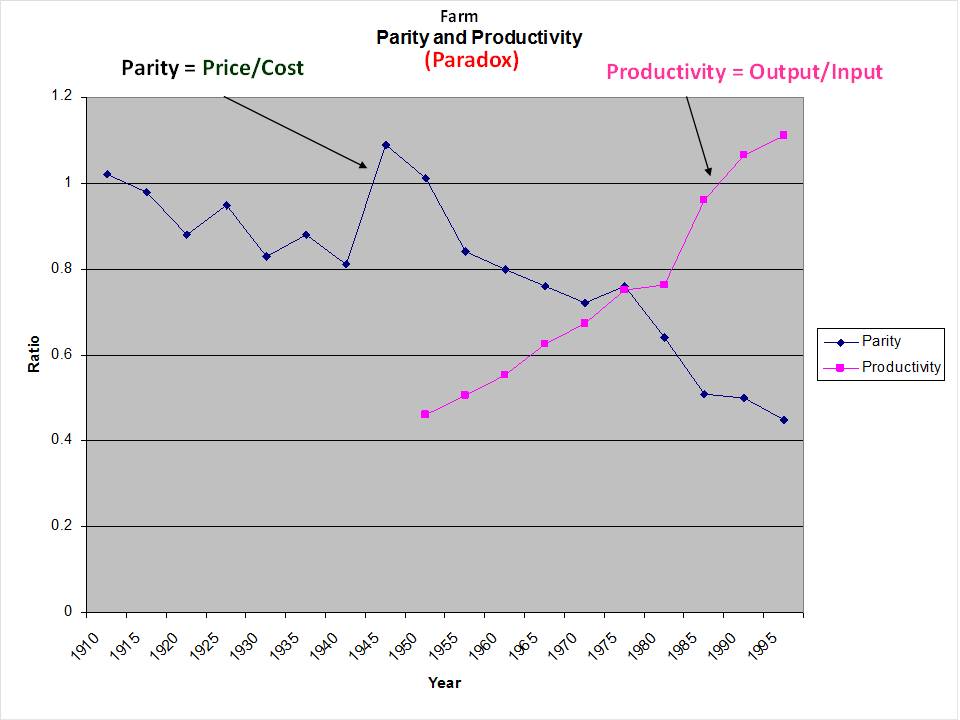
Notice that the farmers have become more productive since 1950 but are still losing ground when it comes to profitability. Many people think that the Black farmers lost their land because they did not know how to farm. They lost their land because they lost their segregated markets (mom and pop stores, restaurants and schools). This was a planned and concerted effort developed in 1962.
In 1962 the business mogul dominated Committee for Economic Development outlined what they called “An Adaptive Approach” in which they stated: “Net migration out of agriculture has been going on for 40 years, and at a rapid rate. Nevertheless, the movement of people from agriculture has not been fast enough…” This “adaptive approach” recommended that 1. vocational agriculture courses in rural areas be scrapped, 2. agricultural prices be substantially lowered and 3. temporary income programs be instituted to protect the most “suited for survival.”
So who do you think were “suited for survival”? Below is a graph showing how farm subsidy programs were divided between Black and white farmers:
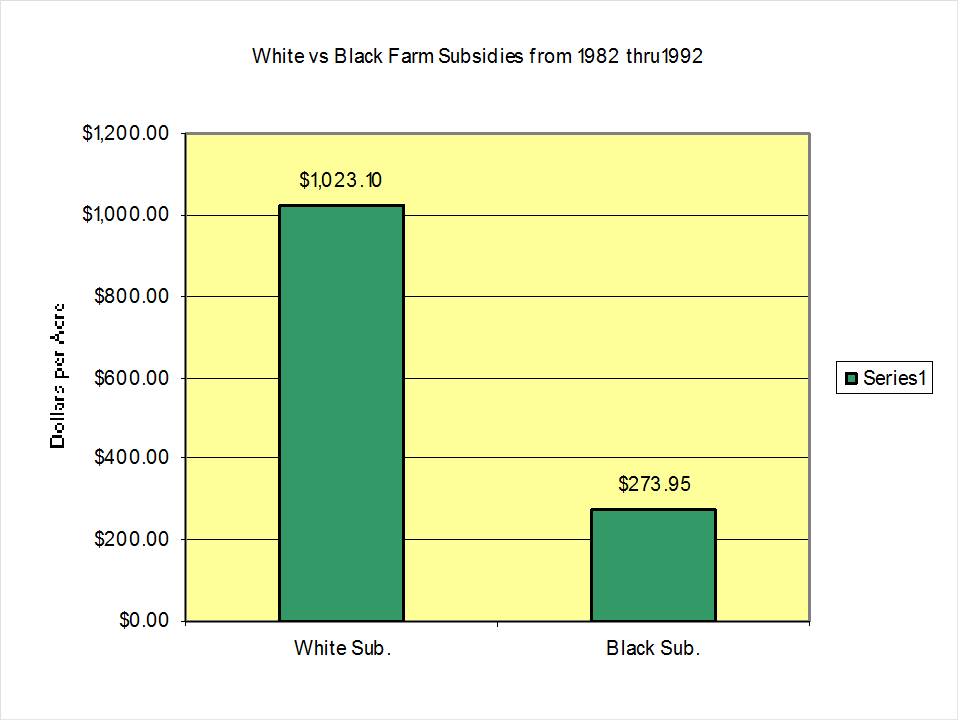
- Stop wanton criticisms of everything that is black-owned and black-operated.
As Dan Quail said, “The mind is a terrible thing to lose.” Indeed we in America an increasingly all over the world have lost our minds and pour out our life blood in terms of our income for foolishness.
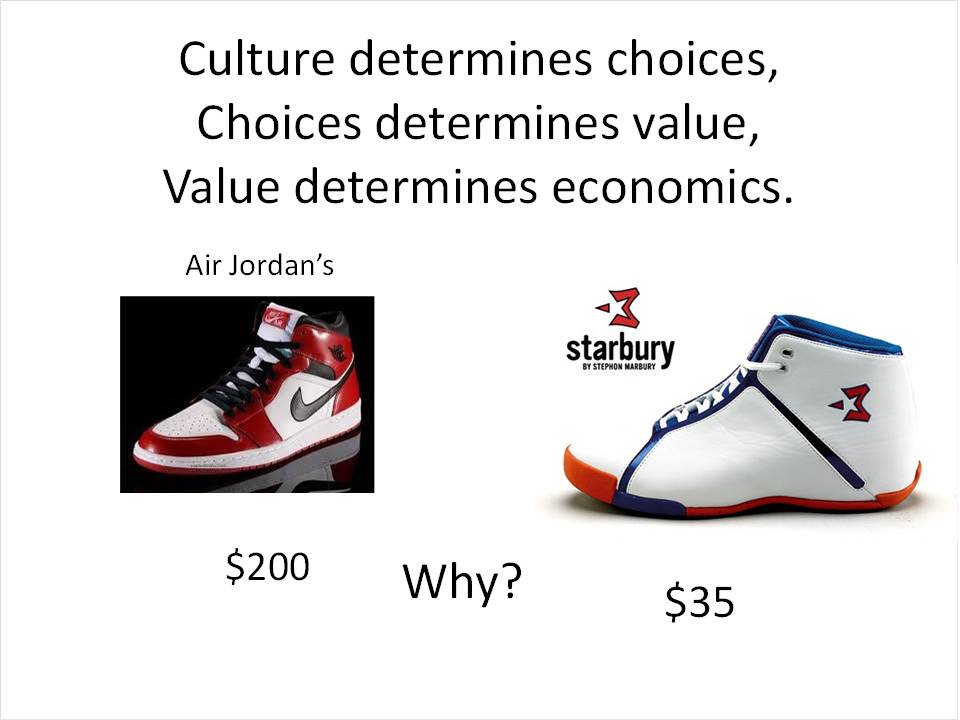
Why is it so hard for any Black business to compete with the white man? Are we too stupid or too greedy or too lazy? Is the “starbury” shoe designed and marketed by Stephon Malbury actually worth $165 less than “Air Jordan’s” or is there something else going on here? Why do ball players and entertainers get paid so much money? Is the tv the instrument of the “devil” to control our economics? We postulate that culture determines choices, choices determines value and value determines economics.
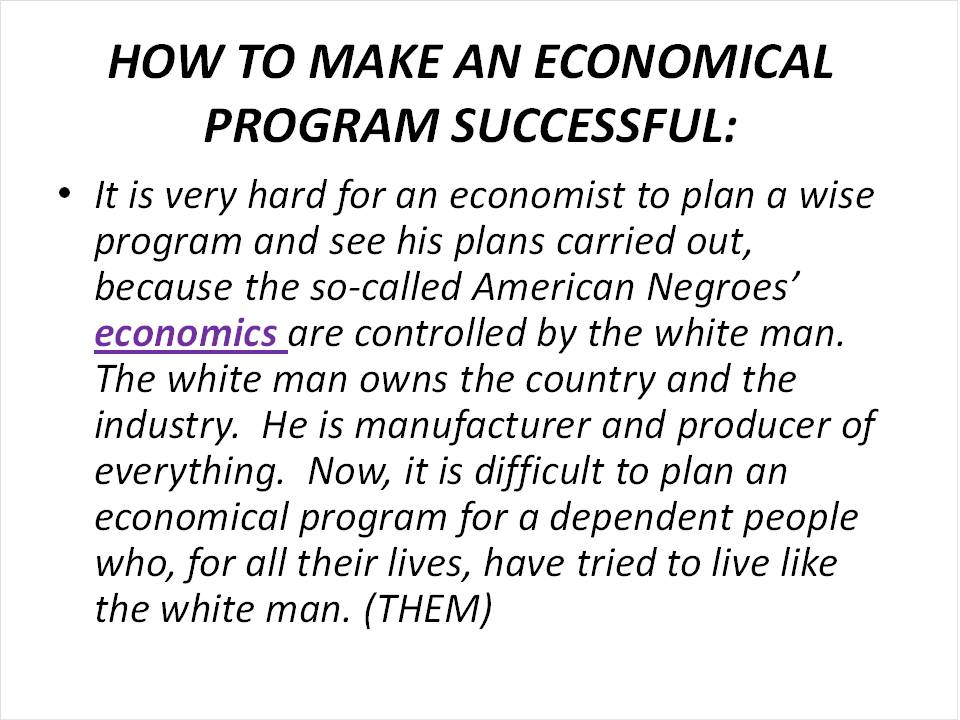
Of course you can’t “live like the white man” unless you buy what the white man tells you to buy. Animals are manipulated by food and punishment. Humans are manipulated by words.
We don’t even have to stick with comparing ourselves to the white man’s enormous market power derived from his control of the airwaves. Let me give you an example of the power of one word in our NOI culture, “Farrakhan”. Recently Min. Farrakhan offered his navy beans for sale. A brother from the local study group asked to use the farm truck to go to Chicago to pick up The Minister’s beans. We did not charge him for the rental of the truck nor for the insurance on the truck. The brother was pleased to spend $900 on fuel and the believers were pleased to reimburse him for the transportation expenses. On the other had I have driven to Chicago with a load of watermelons and the local captain there would pay me no more than $1.50 per melon which is what white store and vegetable stand owners pay me at the farm and they bring their own truck to pick it up. I can’t even sell this same brother, who borrowed the truck and picked up the beans from The Minister), watermelons for $1.50 because he can get them cheaper from the white man. What am I to do?
So are we saying that only The Minister’s specific products will have any value above the white man’s products to members of the Nation of Islam? We must take a critical analysis of how we determine “value”.
We have gone over just three of the principles of The Messenger’s Economic Blueprint. We can ruminate and expand on just these three while we think about operational implications of the other two.
Peace, Doc

Having our own community will be best. It’ll make us feel better about pooling resources. When I go pick up raw milk I mainly see people who look like the farmer getting the milk from them.